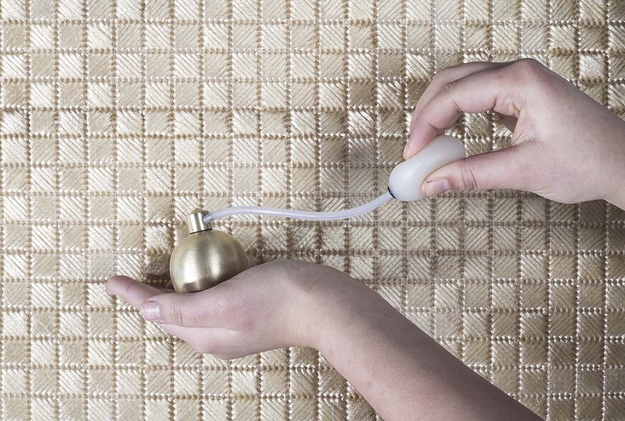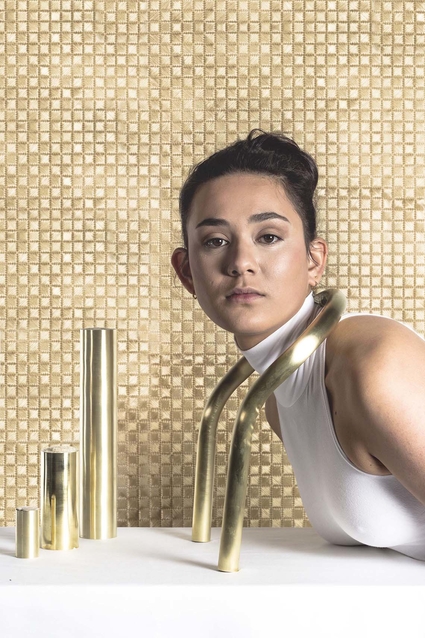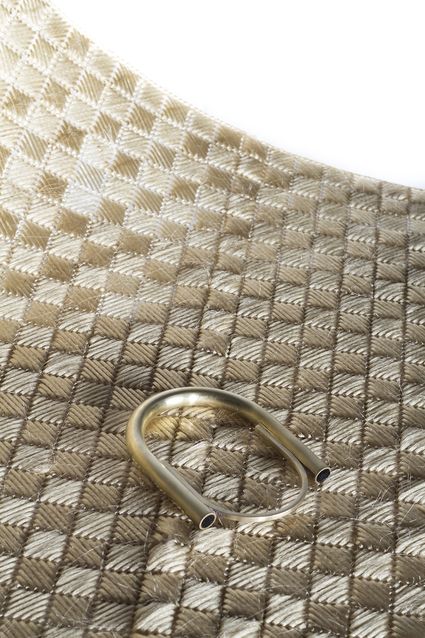Out of all available materials to use, why hair? Zsofia argues that hair is one of the strongest materials to use as a whole head of hair could support up to 2 tons and is efficient in carrying scent for a long time. If you think about how much hair gets thrown away considering that the average person gets their hair cut every 6 months, thats a lot of waste of potential materials.
The jewelry and the table decor is a hollow cylinder in which scented hair by essential oils is placed inside. Wherever you may place the decor piece, jewelry, or tapestry, the scent carried from the hair perfumes the space similar to how the smell of flowers can have that subtle effect. Additionally, what makes this tapestry looking so exquisite is the specific use of blonde hair. For aesthetic reasons, like golden thread, the blonde hair compliments the lights as it reflects it and presents all the different shades of it through the weaves.
So now we know that hair has a lot of benefits as a practical material and Zsofia Kollar’s tapestry shows us that it can be aestheticized even outside of a human body. But if we were to put this in the market and tell people that it’s human hair can the public start to objectify human hair and find it as normal as horse hair that’s often used for brushes? The recycling of hair in this manner is definitely interesting and worth looking into in sustainable product design. However, for many people hair can be sentimental and symbolic so the idea of objectifying it can be a challenge. Nevertheless, the challenge for designers looking to use hair as a material are the DNA protection that is still very prevalent. The question now is, is the DNA protection regulations worth bending for the objectification of human hair?
You can find more of Zsofia Kollar's works here.


